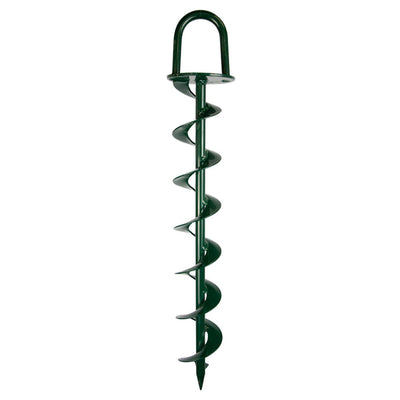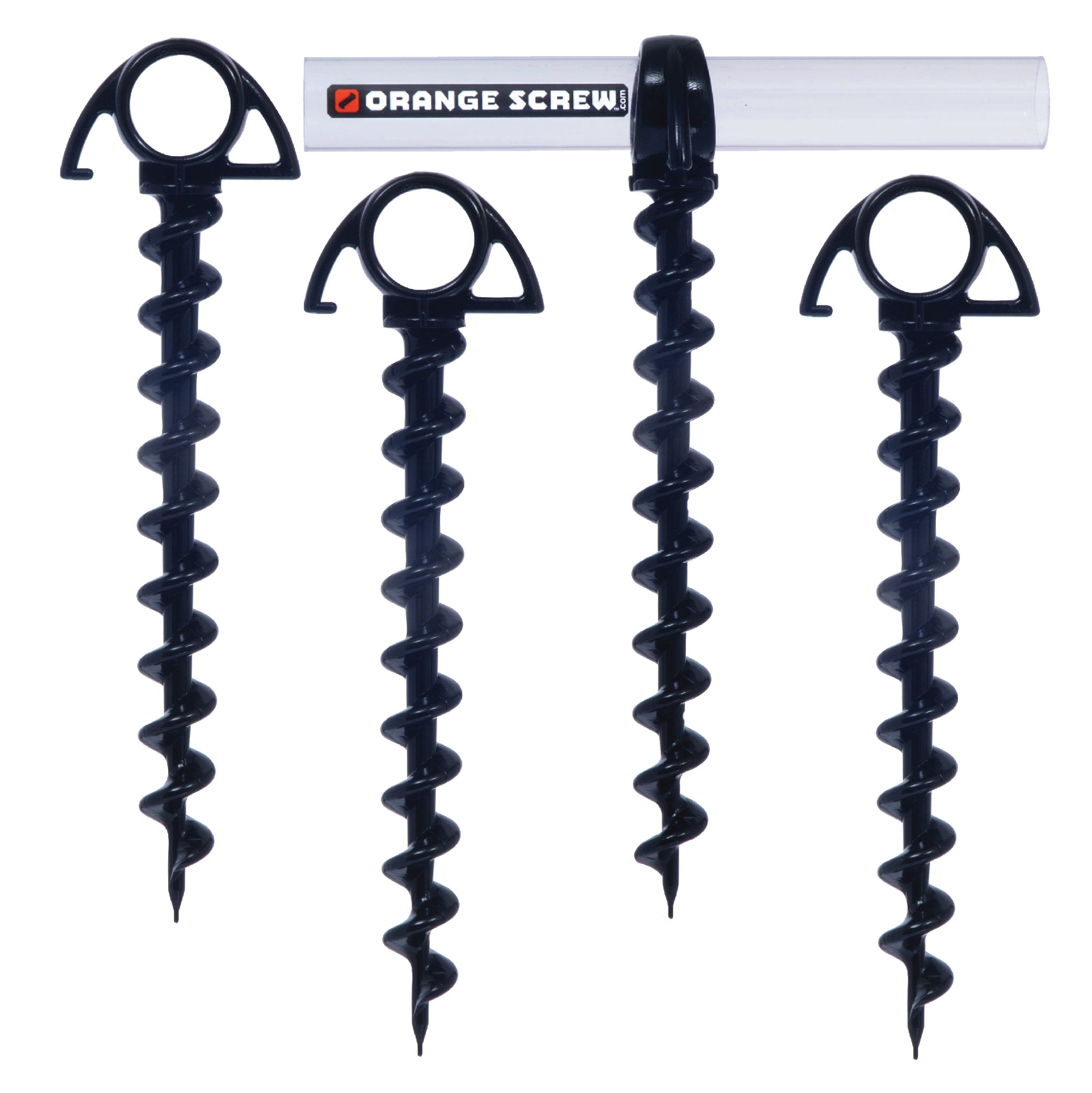Expert-Recommended Techniques to Install a Ground Anchor for Maximum Strength
Expert-Recommended Techniques to Install a Ground Anchor for Maximum Strength
Blog Article
Check Out the Various Types of Ground Anchor for Your Following Project
When beginning on a building or landscaping project, comprehending the numerous types of ground supports available is essential to making certain both security and sturdiness (Ground Anchor). From auger supports, which master varied soil conditions, to risk supports designed for short-lived installments, the choices are many. Furthermore, concrete and screw supports present unique advantages in certain circumstances, while deadman supports are tailored for applications requiring resistance to side forces. The selection of a suitable anchor type can significantly affect the general success of your job, motivating further exploration into their particular benefits and applications.

Auger Anchors
Auger supports are a preferred selection in different building and landscape design jobs as a result of their distinct style and efficient securing capabilities. These supports include a helical screw-like shaft that is driven right into the ground, allowing for a safe and secure and stable hold. The spiral design promotes easy installation and optimizes resistance against lateral forces, making auger supports particularly reliable in applications such as fence, momentary frameworks, and disintegration control.
The installment procedure of auger anchors is relatively uncomplicated. They can be by hand or mechanically installed, relying on the dimension and required depth. This versatility permits their use in varied dirt problems, from sandy to clayey terrains. In addition, auger anchors can be quickly removed and recycled, which contributes to their cost-effectiveness and sustainability.
Among the considerable benefits of auger anchors is their capability to disperse tons evenly across the bordering soil, reducing the danger of dirt disruption and reducing environmental influence. Additionally, they are less susceptible to loosening or heaving in time contrasted to conventional securing approaches. As a result, auger supports are a superb selection for jobs calling for trusted and sturdy anchoring solutions.

Risk Anchors
When it concerns securing frameworks in a variety of outdoor applications, stake supports offer a simple and trustworthy option. These anchors are normally built from resilient materials such as steel or light weight aluminum, made to hold up against environmental anxieties while supplying optimal security. Their straightforward style permits quick setup, making them a perfect selection for short-lived or long-term anchoring demands.
Stake supports are particularly helpful in protecting tents, canopies, and various other lightweight frameworks versus wind and weather condition. They operate by being driven right into the ground at an angle, developing a strong hold that withstands pull-out pressures - Ground Anchor. The efficiency of risk anchors relies on a number of aspects, including soil kind, wetness web content, and the angle of installment
For included safety, numerous risk supports come with accessory factors for bands or ropes, allowing for tension modifications as needed. In applications such as landscape design or construction, they can effectively support tools or structures on uneven surface. Overall, risk supports give a economical and functional remedy for protecting different exterior installations, making them a preferred choice for contractors and DIY lovers alike.
Concrete Anchors
Concrete supports offer a robust service for securing frameworks to concrete surface areas, making certain stability and safety in numerous applications. These anchors are essential for tasks varying from household buildings to massive industrial installations. They come in different see this site kinds, including development supports, adhesive anchors, and undercut supports, each designed for certain tons needs and environmental conditions.
Expansion supports depend on mechanical systems to hold the concrete when set up. They are suitable for medium to durable applications. Adhesive anchors use high-strength epoxy or material to bond the support to the Related Site concrete, supplying remarkable load-bearing capabilities, specifically in cracked concrete situations. Undercut anchors produce an unique form within the concrete, offering remarkable holding power, specifically in applications where tensile tons prevail.
Choosing the proper concrete support entails thinking about aspects such as the weight of the load, the problem of the concrete, and ecological problems. Proper installation techniques are critical to ensure optimum performance and integrity. When performed appropriately, concrete supports dramatically boost the architectural stability of numerous tasks, making them indispensable in modern-day construction techniques. Recognizing the specific needs of your task will aid in choosing the ideal sort of concrete anchor for the task.
Screw Anchors

Screw supports are a versatile attaching option that can be efficiently used in a selection of applications where conventional concrete supports might not be sufficient. These supports contain a helical style that enables them to be easily driven right into the ground, making them excellent for usage in soil and various other substrates. Their unique structure supplies superb holding power and resistance to pull-out pressures, making them suitable for many jobs, from landscaping to structural support.
One of the main advantages of screw supports is their convenience of installment. They call for very little tools and can typically be installed without the requirement for excavation, which saves both time and labor prices. In addition, screw supports can be eliminated and reused, providing a sustainable option for momentary applications.
Screw supports are specifically helpful in areas where soil problems are testing, such as loose or sandy soils. Their ability to be mounted at varying midsts permits customization based upon details project needs. On the whole, screw anchors offer a efficient and reliable securing method, making them an exceptional selection for specialists and designers seeking reliable solutions for their jobs.
Deadman Anchors
Deadman anchors function as a robust service for stabilizing structures in tough problems, specifically where conventional anchoring techniques may drop brief. These anchors include huge, hefty objects hidden underground, which produce resistance versus lateral forces. The design usually involves a straight part, such as a block of concrete or a steel plate, buried in the dirt, to which bands or cords are affixed.
The efficiency of deadman supports lies in their ability to disperse tons over a bigger location, decreasing the danger of failure in unpredictable soil problems. They are particularly advantageous in applications such as keeping wall surfaces, short-term frameworks, and incline stabilization, where soil activity can endanger the look at this now honesty of the structure.
Installment of deadman anchors requires careful planning to ensure they are placed at the appropriate depth and orientation, maximizing their load-bearing capability. While they may call for even more labor and product than lightweight supports, their dependability in negative conditions makes them invaluable for lasting tasks. Additionally, deadman anchors are versatile and can be adapted to various applications, making them a go-to choice for designers encountering unique challenges in their projects.
Verdict
Auger supports stand out in varied soil problems, while risk supports suit temporary applications. For concrete surfaces, growth and sticky supports provide trusted options, and screw supports supply flexibility in challenging terrains.
Furthermore, concrete and screw anchors present distinct advantages in particular circumstances, while deadman anchors are customized for applications needing resistance to side pressures - Ground Anchor.Auger supports are a prominent choice in numerous building and construction and landscaping tasks due to their unique design and efficient anchoring capabilities. They come in various types, including expansion anchors, glue anchors, and undercut supports, each made for specific lots requirements and ecological problems
Adhesive supports make use of high-strength epoxy or material to bond the support to the concrete, providing premium load-bearing abilities, especially in fractured concrete scenarios. On the whole, screw supports provide a reputable and reliable anchoring approach, making them an outstanding choice for specialists and designers seeking efficient options for their tasks.
Report this page